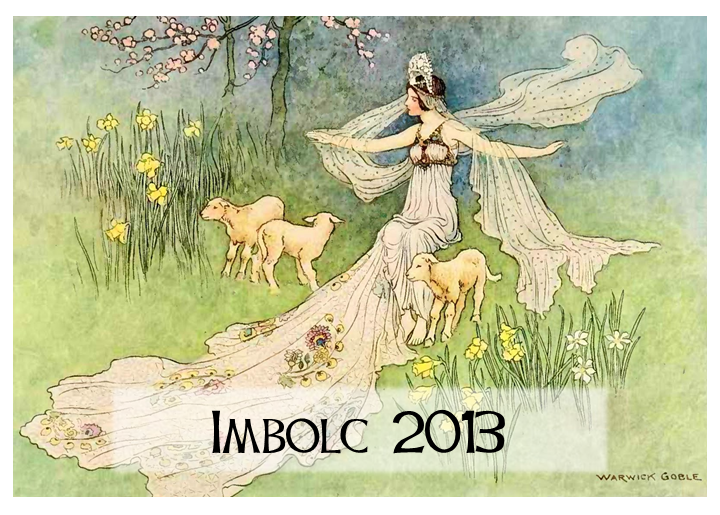| This Week’s Topic… | |

Best viewed in
|
Imbolc
Imbolc is one of the four principal festivals of the Irish calendar, celebrated either at the beginning of February or at the first local signs of Spring. Originally dedicated to the goddess Brigid, in the Christian period it was adopted as St Brigid's Day. In Scotland the festival is also known as Là Fhèill Brìghde, in Ireland as Lá Fhéile Bríde, and in Wales as Gwyl Ffraed. Imbolc is traditionally a time of weather prognostication, and the old tradition of watching to see if serpents or badgers came from their winter dens is perhaps a precursor to Groundhog Day.
Thig an
nathair as an toll Imbolc is the day the Cailleach - the hag goddess - gathers Her firewood for the rest of the winter. Legend has it that if she intends to make the winter last a good while longer, she will make sure the weather on Imbolc is bright and sunny, so she can gather plenty of firewood. Therefore, people are generally relieved if Imbolc is a day of foul weather, as it means the Cailleach is asleep and winter is almost over. On the Isle of Man, where She is known as Caillagh ny Groamagh, the Cailleach is said to have been seen on Imbolc in the form of a gigantic bird, carrying sticks in her beak. Fire and purification are an important aspect of this festival. Brigid (also known as Brighid, Bríde, Brigit, Brìd) is the goddess of poetry, healing and smithcraft. As both goddess and saint she is also associated with holy wells, sacred flames, and healing. The lighting of candles and fires represents the return of warmth and the increasing power of the Sun over the coming months. |
